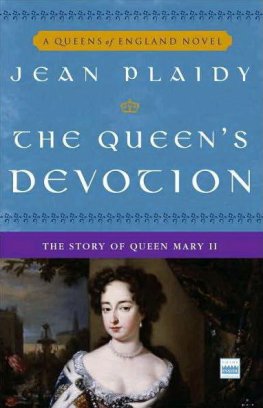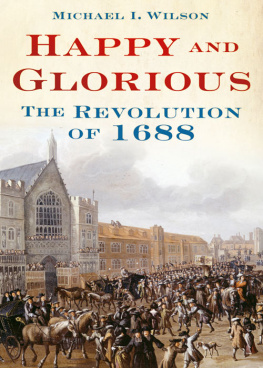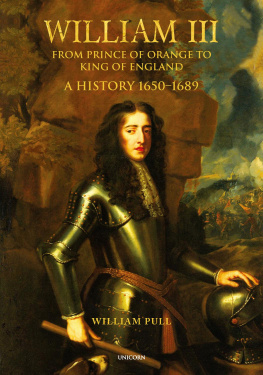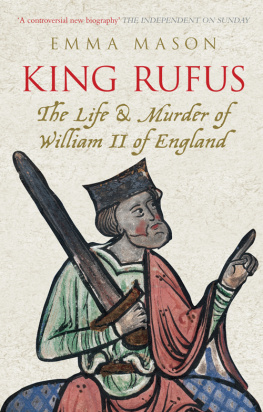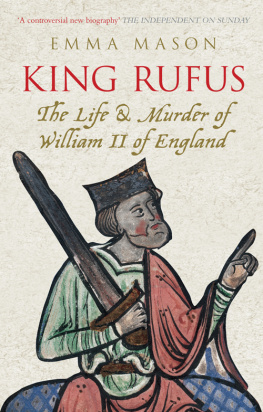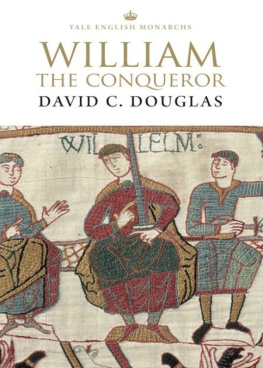William of Orange and the Struggle for the Crown of England
William of Orange and the Struggle for the Crown of England
The Glorious Revolution
By Brian Best
An imprint of Pen & Sword Books Ltd
First published in Great Britain in 2021 by
FRONTLINE BOOKS
an imprint of Pen & Sword Books Ltd,
47 Church Street, Barnsley, S. Yorkshire, S70 2AS
Copyright Brian Best
The right of Brian Best to be identified as the author of this work has been asserted by him in accordance with the
Copyright, Designs and Patents Act 1988.
ISBN: 978 1 52679 522 9
ePUB ISBN: 978 1 52679 523 6
Mobi ISBN: 978 1 52679 523 6
All rights reserved. No part of this publication may be reproduced, stored in or introduced into a retrieval system, or transmitted, in any form, or by any means (electronic, mechanical, photocopying, recording or otherwise) without the prior written permission of the publisher. Any person who does any unauthorized act in relation to this publication may be liable to criminal prosecution and civil claims for damages.
CIP data records for this title are available from the British Library
For more information on our books, please visit
or write to us at the above address.
Pen & Sword Books Ltd incorporates the imprints of Pen & Sword
Archaeology, Atlas, Aviation, Battleground, Discovery,
Family History, History, Maritime, Military, Naval, Politics,
Social History, Transport, True Crime, Claymore Press,
Frontline Books, Praetorian Press,
Seaforth Publishing and White Owl
For a complete list of Pen and Sword titles please contact
PEN & SWORD LTD
47 Church Street, Barnsley, South Yorkshire, S70 2AS, England
E-mail:
Or
PEN AND SWORD BOOKS
1950 Lawrence Rd, Havertown, PA 19083, USA
E-mail:
Introduction
This account features the leading figures of the time who saw out the Stuart dynasty from 1660 to 1714. It also covers various Acts passed by Parliament and the wars between the English, Irish, the Netherlands and France. It covers the Popish Plots, the religious conflicts and the dreadful punishments metered out to those who disobeyed the royal decree. It was also a time when diarists kept a true record of their fellow countrymen. The Glorious Revolution of 168889, a foreign monarch and the Protestant daughter of a born again Catholic King made one of least-known periods of British history into one of the most important fifty years that shaped democracy in Great Britain and the United States.
The end of the English Civil War left the country impoverished and under the bleakly austere dictatorship of Oliver Cromwell. The incomes of citizens were damaged or bankrupted, while public and private properties were destroyed on a vast scale. Cromwells New Model Army spent most of the 1650s on campaign, but when he died in September 1658, the Protectorate and the Army went into a swift decline. At one time it was felt that factions of the New Model Army loyal to different generals might wage war on each other, precipitating another Civil War.
When Charles II returned to England on 25 May 1660, sparking the Restoration, the country was in a poor state. It had a small army, a navy that was ranked below France and the Netherlands and a Parliament that was made up of divided sides, mostly Tories and Whigs. It became dominated by the House of Stuart. The English Parliament was a junior partner in the governing of the country and had met only eleven times in the first forty years of the seventeenth century. When Parliament met after William and Marys enthronement, a historian noted, it was nothing less than a landmark moment in the emergence of the modern state. It was indeed a landmark moment for the English, whose decisions were made by a succession of kings and queens. One of the most recent monarchs was Charles I, who firmly believed in the divine right of kings. Although short in stature and possessing a bad stammer, he was convinced that he was next to God. After his execution on 30 January 1649, Cromwell ran the country as a Puritan republican until his death.
The Restoration in 1660 brought Charles II to the throne, much to the resentment of those who supported the Commonwealth. Nonconformists were deprived by the Act of Uniformity of 1662, which forbade them from holding civil office, and laws against dissenters that were enforced by local Justices of the Peace. The political crisis that followed Charles Is death resulted in the restoration of the monarchy and his eldest son was invited to return to Britain and reclaim his crown.
Charles II was regarded as the Merry Monarch and surrounded himself with close boisterous advisors with the acronym-based names of Lord CLIFFORD, Lord ARLINGTON, The Duke of BUCKINGHAM, Lord ASHLEY and Lord LAUDERDALE, together making a new English word CABAL. Charles was always short of money, which did not deter him from feeding well, establishing Newmarket for the racing and having thirteen known mistresses. These included Lucy Walters (the mother of the Duke of Monmouth), Barbara Villiers and the famous Nell Gwynne. They quite often bore him children and Charles was pleased to confer dukedoms on them, including James Scott, the Duke of Monmouth. John Wilmot, 2nd Earl of Rochester, a poet and courtier, said of Charles:
Here lies a great and mighty King,
Whose promise none relied on;
He never said a foolish thing,
Nor ever did a wise one.
During his enforced exile, Charles lived at the court of his cousin, King Louis XIV of France. Later when he became king, he was always at the beck and call of Louis, from whom he secretly accepted bribes. In exchange, he sold his sovereign rights to Dunkirk on 27 October 1662 to France for 320,000, much to the dismay of Parliament.
On 26 January 1661, Charles issued the Royal Warrant that created the first regiments of the British Army. Scotland and Ireland maintained separate military establishments until the Act of Union in 1707. The new army consisted of two regiments of cavalry, the Life Guards formed from former Cavaliers, and The Blues made up of some of the best New Model Army horse regiments. The infantry consisted of the Coldstream Guards, the Grenadiers Guards, The Royal Scots and the Queens Royals. The general public, encouraged by the pamphleteers, feared this standing army under royal command would allow monarchs to ignore the wishes of Parliament. It was not until the reign of William III that the near-perpetual wars with other European states saw the British Army being accepted by the public. In 1688, Parliament succeeded in wresting control of the army under a general bill, the first Mutiny Act. Because the Bill of Rights prohibited the existence of a standing army during peacetime without the consent of Parliament, the Mutiny Act was expressly limited to one years duration. Many other changes occurred during this transition from absolute monarchy to constitutional monarchy. As written in the Oxford History of the British Empire Companion series, these were:






